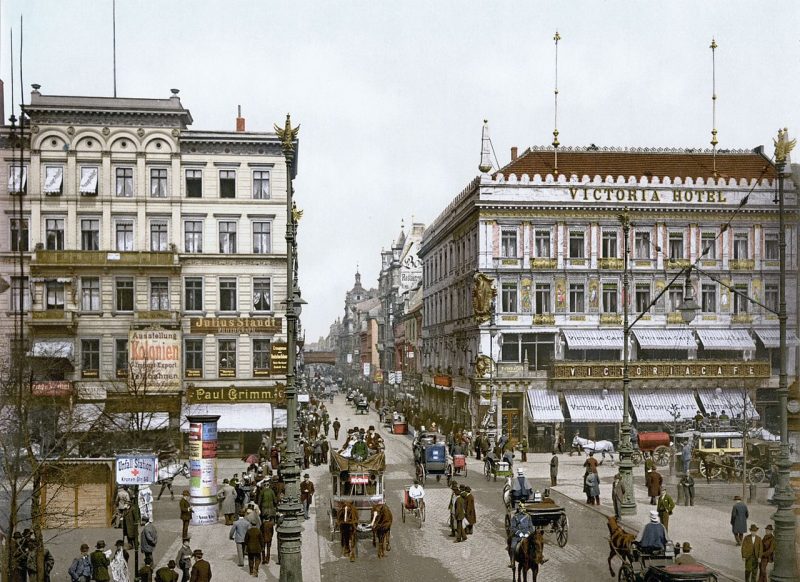In the early 20th century, Berlin had become a fertile ground for the German Expressionist movement.n fields such as architecture, painting and cinema new forms of artistic styles were invented. At the end of the First World War in 1918, a republic was proclaimed by Philipp Scheidemann at the Reichstag building. In 1920, the Greater Berlin Act incorporated dozens of suburban cities, villages and estates around Berlin into an expanded city. This rare color footage offers a rare glimpse into an ordinary day in Berlin back in 1900s.

The act increased the area of Berlin from 66 to 883 km2 (25 to 341 sq mi). The population almost doubled and Berlin had a population of around four million. During the Weimar era, Berlin underwent political unrest due to economic uncertainties, but also became a renowned centre of the Roaring Twenties. The metropolis experienced its heyday as a major world capital and was known for its leadership roles in science, technology, arts, the humanities, city planning, film, higher education, government and industries. Albert Einstein rose to public prominence during his years in Berlin, being awarded the Nobel Prize for Physics in 1921.
The “spirit of 1914” was the overwhelming, enthusiastic support of all elements of the population for war in 1914. In the Reichstag, the vote for credits was unanimous, with all the Socialists joining in. One professor testified to a “great single feeling of moral elevation of soaring of religious sentiment, in short, the ascent of a whole people to the heights.” At the same time, there was a level of anxiety; most commentators predicted the short victorious war – but that hope was dashed in a matter of weeks, as the invasion of Belgium bogged down and the French Army held in front of Paris. The Western Front became a killing machine, as neither army moved more than a few hundred yards at a time. There had been no preparations before the war, and no stockpiles of essential goods. Industry was in chaos, unemployment soared while it took months to reconvert to munitions productions. In 1916, the Hindenburg Program called for the mobilization of all economic resources to produce artillery, shells, and machine guns. Church bells and copper roofs were ripped out and melted down.
Conditions on the homefront worsened month by month, for the British blockade of Germany cut off supplies of essential raw materials and foodstuffs, while the conscription of so many farmers (and horses) reduced the food supply. Likewise, the drafting of miners reduced the main energy source, coal. the textile factories produced Army uniforms, and warm clothing for civilians ran short. The device of using ersatz materials, such as paper and cardboard for cloth and leather proved unsatisfactory. Soap was in short supply, as was hot water.
Morale of both civilians and soldiers continued to sink but using the slogan of “sharing scarcity” the Berlin bureaucracy ran an efficient rationing system nevertheless. The food supply increasingly focused on potatoes and bread as it was harder and harder to buy meat. Rationing was installed, and soup kitchens were opened. The meat ration in late 1916 was only 31% of peacetime, and it fell to 12% in late 1918. The fish ration was 51% in 1916, and none at all by late 1917. The rations for cheese, butter, rice, cereals, eggs and lard were less than 20% of peacetime levels. In 1917 the harvest was poor, and the potato supply ran short, and Germans substituted almost inedible turnips; the “turnip winter” of 1917-18 was remembered with bitter distaste for generations.
